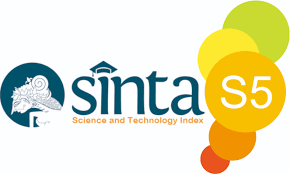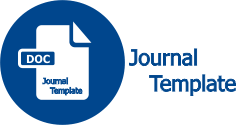Aplikasi Pembelajaran Bangun Ruang dengan Augmented Reality (Studi Kasus : Sdn Rorotan 07 Jakarta)
Abstract
Keywords
Full Text:
PDFReferences
Haris Budiman, “Peran Teknologi Informasi Dan Komunikasi Dalam Pendidikan,” Al-Tadzkiyyah J. Pendidik. Islam, vol. 8, no. 1, pp. 31–43, 2017.
I. Al Ikhsan, N. Supriadi, and W. Gunawan, “Media Pembelajaran Berbasis Augmented Reality: Materi Bangun Ruang Sisi Datar,” JKPM (Jurnal Kaji. Pendidik. Mat., vol. 7, no. 2, p. 289, 2022, doi: 10.30998/jkpm.v7i2.12839.
A. Fauzi, A. Buchori, and D. Wulandari, “Pengembangan Media Berbasis Android dengan Fitur Augemented Reality Menggunakan Pendekatan Etnomatematika Materi Bangun Ruang Sisi Datar Di SMP,” Imajiner J. Mat. dan Pendidik. Mat., vol. 3, no. 6, pp. 484–495, 2021, doi: 10.26877/imajiner.v3i6.7911.
R. E. Saputro and D. I. S. Saputra, “Pengembangan Media Pembelajaran Mengenal Organ Pencernaan Manusia Menggunakan Teknologi Augmented Reality,” J. Buana Inform., vol. 6, no. 2, 2015, doi: 10.24002/jbi.v6i2.404.
L. V. Fedynich, “Teaching beyond the classroom walls: The pros and cons of cyber learning,” J. Instr. Pedagog., vol. 13, pp. 1–7, 2014, [Online]. Available: http://aabri.comwww.aabri.com/manuscripts/131701.pdf
T. Pipattanasuk and A. Songsriwittaya, “Development of an instructional model with augmented reality technology for vocational certificate students,” Int. J. Instr., vol. 13, no. 3, pp. 539–554, 2020, doi: 10.29333/iji.2020.13337a.
T. Koparan, H. Dinar, E. T. Koparan, and Z. S. Haldan, “Integrating augmented reality into mathematics teaching and learning and examining its effectiveness,” Think. Ski. Creat., vol. 47, no. January, p. 101245, 2023, doi: 10.1016/j.tsc.2023.101245.
A. B. Craig, “Understanding augmented reality: concepts and applications.,” 2013. doi: https://doi.org/10.1016/B978-0-240-82408-6.00002-3.
J. Motejlek and E. Alpay, “Taxonomy of Virtual and Augmented Reality Applications in Education,” IEEE Trans. Learn. Technol., vol. 14, no. 3, pp. 415–429, 2021, doi: 10.1109/TLT.2021.3092964.
E. A. Kyza, Y. Georgiou, M. Souropetsis, and A. Agesilaou, “Collecting ecologically valid data in location-aware augmented reality settings: A comparison of three data collection techniques,” Int. J. Mob. Blended Learn., vol. 11, no. 2, pp. 78–95, 2019, doi: 10.4018/IJMBL.2019040106.
S. D. Putra, D. Aryani, H. Syofyan, and V. Yasin, “Aplikasi Augmented Reality Geometri Sekolah Dasar Untuk Bangun Datar dan Ruang Menggunakan Metode Marker Based Tracking,” vol. 7, pp. 250–259, 2023, doi: 10.30865/mib.v7i1.5281.
DOI: http://dx.doi.org/10.22441/format.2023.v12.i2.005
Refbacks
- There are currently no refbacks.
Copyright (c) 2023 Format : Jurnal Ilmiah Teknik Informatika

This work is licensed under a Creative Commons Attribution-NonCommercial-NoDerivatives 4.0 International License.
Format : Jurnal Ilmiah Teknik Informatika
Fakultas Ilmu Komputer Universitas Mercu Buana
Jl. Raya Meruya Selatan, Kembangan, Jakarta 11650
Tlp./Fax: +62215840816
http://publikasi.mercubuana.ac.id/index.php/format

|

Ciptaan disebarluaskan di bawah Lisensi Creative Commons Atribusi-NonKomersial 4.0 Internasional.











